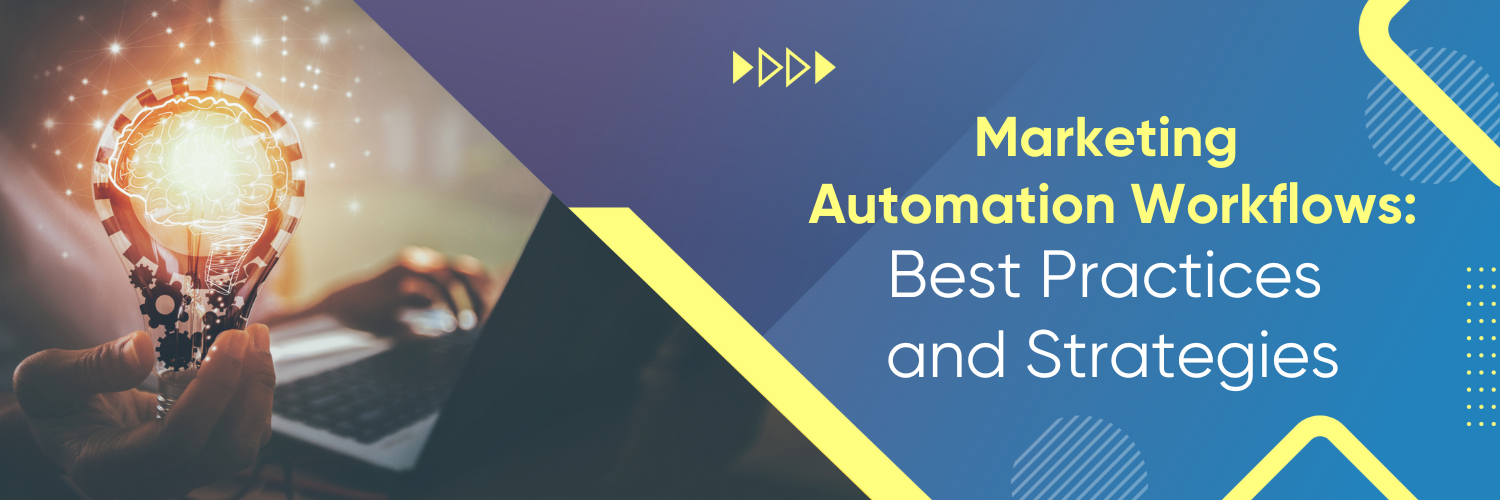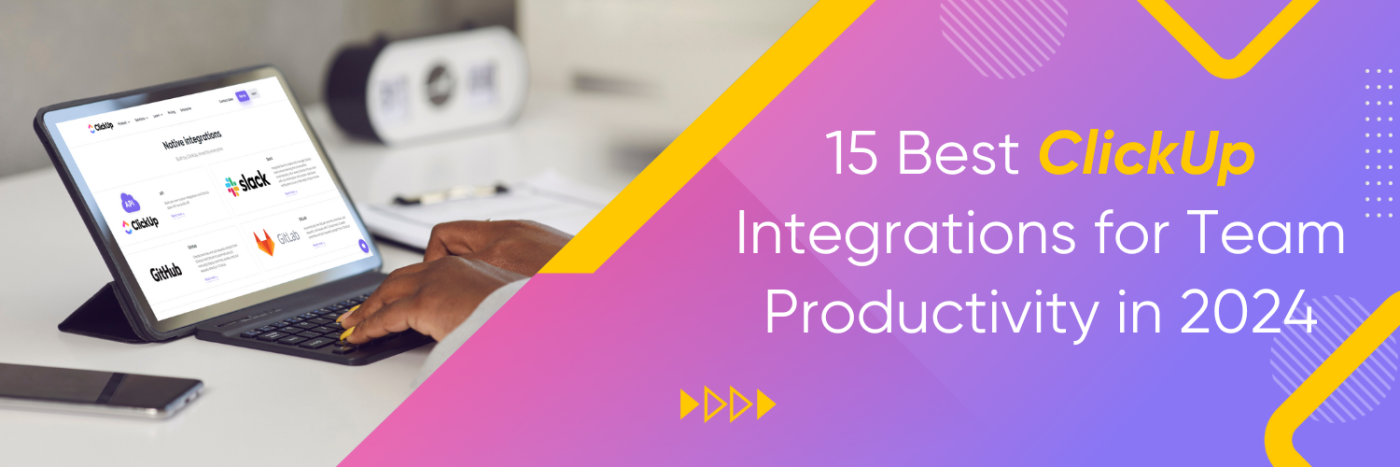What are Marketing Automation Workflows?
Marketing automation workflows are a series of automated actions and triggers designed to streamline marketing processes and deliver personalized experiences to customers. By implementing effective workflows, businesses can enhance efficiency, improve targeting and personalization, increase lead conversion rates, and deliver timely and relevant content throughout the customer journey. This blog aims to explore the best practices and strategies for designing and implementing successful marketing automation workflows.
Marketing automation workflows are built upon a set of predefined actions and triggers that guide the automation process. These workflows help automate repetitive marketing tasks, nurture leads, and provide a personalized experience to customers. The key components of an effective marketing automation workflow include defining goals and objectives, identifying customer segments, mapping out customer journeys and touchpoints, and integrating lead scoring and nurturing strategies. By implementing marketing automation workflows, businesses can streamline their marketing processes, save time, and deliver a consistent and personalized customer experience.
Best Practices for Designing Marketing Automation Workflows
- Designing effective marketing automation workflows requires careful planning and implementation. To begin, it is crucial to clearly define the goals and objectives you want to achieve through your workflows. Whether your aim is lead generation, lead nurturing, or customer retention, having well-defined goals will serve as a guide for your workflow design and enable you to measure success accurately.
- Segmenting your audience is another best practice in designing marketing automation workflows. By dividing your audience based on demographics, behaviors, or other relevant criteria, you can create personalized and targeted workflows. This allows you to deliver content that is more relevant to each segment, increasing engagement and enhancing the customer experience.
- Understanding the customer journey is a critical aspect of designing effective workflows. By mapping out the various touchpoints and interactions customers have with your brand, from initial awareness to final conversion, you can identify the appropriate automation actions at each stage. This ensures that the right messages are delivered to customers at the right time, fostering a seamless and personalized journey.
- Incorporating lead scoring and nurturing is essential for optimizing your workflows. Lead scoring helps prioritize leads based on their level of engagement and fit with your ideal customer profile. By assigning scores, you can focus your resources on the most promising prospects. Additionally, lead nurturing workflows guide leads through the sales funnel by providing relevant and timely content tailored to their needs and concerns.
- A/B testing and optimization are vital components of designing effective workflows. A/B testing allows you to compare different variations of your automation actions, email content, subject lines, or other elements to determine which performs best. Continuously testing and optimizing your workflows based on data-driven insights will lead to improved effectiveness and better results over time.
- Integrating your marketing automation platform with your CRM system is crucial for seamless data synchronization. This integration ensures that customer data is up to date and shared between teams, enabling a cohesive and personalized customer experience. It allows you to have a comprehensive view of each customer and deliver targeted communications across multiple channels.
- Monitoring and analyzing performance metrics is key to measuring the success of your workflows. Regularly tracking key performance indicators such as conversion rates, engagement metrics, lead quality, and customer retention provides valuable insights into the effectiveness of your workflows. By analyzing these metrics, you can identify areas for improvement, optimize your workflows, and ensure they align with your goals.
- Lastly, it is essential to continuously iterate and improve your marketing automation workflows. As you gather more data and insights, be open to making adjustments and enhancements to your workflows. Embrace a culture of experimentation and innovation, test new ideas, and implement changes based on the results. This iterative approach will help you optimize the performance and effectiveness of your automation workflows and drive better outcomes for your business.
Strategies for Successful Implementation of Marketing Automation Workflows
Align marketing and sales teams
Collaboration and alignment between marketing and sales teams are crucial for effective implementation. Establish effective communication channels, define shared goals and metrics, and implement a lead management process that ensures seamless handoff between teams. This alignment fosters a unified approach and improves lead qualification, nurturing, and conversion.
Integrate CRM systems
Integrating your marketing automation platform with your CRM system is essential for data synchronization and a comprehensive view of your customers. This integration enables real-time data updates, enhances lead management, and allows for more personalized and targeted automation. Ensure that customer data is accurately shared between systems to provide a seamless customer experience.
Create engaging and relevant content
Tailor your content to each stage of the customer journey within your workflows. Develop a content strategy that aligns with your buyer personas and addresses their pain points and needs. By delivering valuable and relevant content, you can nurture leads, build trust, and drive conversions. Use a mix of formats such as emails, landing pages, and downloadable resources to keep your audience engaged.
Leverage behavioral triggers and personalized messaging
Incorporate behavioral triggers based on user actions and interactions with your brand. These triggers can include website visits, email opens, or downloads. Use personalized messaging to deliver targeted content and offers that resonate with your audience. By leveraging behavioral triggers and personalization, you can create a more personalized and tailored experience for your customers.
Monitor and analyze performance metrics

Regularly monitor key performance indicators (KPIs) to assess the effectiveness of your marketing automation workflows. Track metrics such as conversion rates, engagement levels, lead quality, and customer retention. Use this data to identify areas for improvement and optimization. Continuously analyze the results to refine your workflows and drive better outcomes.
Provide training and ongoing support
Ensure that your marketing and sales teams receive adequate training on the use of the marketing automation platform and workflows. Offer ongoing support and resources to address any challenges or questions that may arise. This enables your teams to leverage the full potential of the automation system and maximize its impact on your marketing efforts.
Stay updated with industry trends and best practices
Marketing automation is an ever-evolving field. Stay informed about emerging trends, technologies, and best practices to continually enhance your workflows. Attend industry conferences, participate in webinars, and engage with marketing automation communities to stay ahead of the curve.
By implementing these strategies, you can effectively deploy marketing automation workflows and drive successful outcomes for your business. The alignment of teams, integration of systems, creation of engaging content, utilization of behavioral triggers, monitoring of performance metrics, provision of training and support, and staying updated with industry trends will contribute to the overall success of your marketing automation implementation.
Conclusion

Marketing automation workflows are powerful tools that enable businesses to streamline their marketing processes and deliver personalized experiences to customers. By following the best practices and strategies discussed in this blog, marketers can design and implement effective workflows that drive better results. It is essential for businesses to leverage these insights, align marketing and sales teams, integrate CRM systems, create engaging content, utilize behavioral triggers, and monitor performance metrics. By optimizing marketing automation workflows, businesses can achieve their goals, enhance customer experiences, and stay ahead in the competitive landscape.
To further optimize your marketing automation journey, partnering with Ubique Digital Solutions can be a game-changer for your business. Our team of experienced experts is dedicated to understanding your unique needs and providing tailored solutions that align with your goals. We have a deep understanding of marketing automation and can guide you through the entire process, from strategy development to implementation and optimization. With our expertise, you can leverage the full potential of marketing automation to streamline your processes, deliver personalized experiences to your customers, and ultimately achieve your business objectives. Don’t miss out on this opportunity to take your marketing automation to the next level. Contact Ubique Digital Solutions today and embark on your path to marketing automation success.
FAQs
Q: What are marketing automation workflows?
Marketing automation workflows are a series of automated actions and triggers designed to streamline marketing processes and deliver personalized experiences to customers. They involve mapping out customer journeys, incorporating lead nurturing strategies, and automating tasks to enhance efficiency and effectiveness.
Q: How can marketing automation workflows benefit businesses?
Marketing automation workflows offer several benefits, including improved efficiency, enhanced targeting and personalization, increased lead conversion rates, streamlined lead management, and the ability to deliver timely and relevant content throughout the customer journey.
Q: What are some key components of effective marketing automation workflows?
Effective marketing automation workflows consist of clear goals and objectives, customer segmentation strategies, mapping of customer journeys and touchpoints, lead scoring and nurturing, A/B testing and optimization, and performance monitoring and analysis.
Q: How can I align marketing and sales teams for successful implementation of marketing automation workflows?
Alignment between marketing and sales teams can be achieved by establishing effective communication channels, defining shared goals and metrics, implementing a lead management process, and integrating CRM systems with marketing automation platforms for seamless data synchronization.
Q: How can I measure the success of my marketing automation workflows?
Measuring the success of marketing automation workflows can be done by monitoring key performance indicators (KPIs) such as conversion rates, engagement metrics, lead quality, and customer retention. Regular analysis of these metrics can help identify areas for improvement and optimization.

















